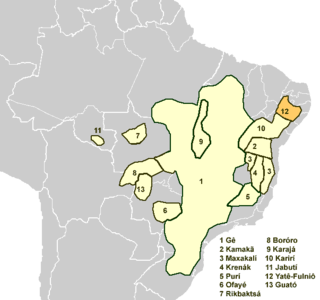Related Research Articles

In phonology, an allophone is one of a set of multiple possible spoken sounds, or phones, or signs used to pronounce a single phoneme in a particular language. For example, in English, and the aspirated form are allophones for the phoneme, while these two are considered to be different phonemes in some languages such as Thai and Hindi. On the other hand, in Spanish, and are allophones for the phoneme, while these two are considered to be different phonemes in English.

The International Phonetic Alphabet (IPA) is an alphabetic system of phonetic notation based primarily on the Latin script. It was devised by the International Phonetic Association in the late 19th century as a standardized representation of speech sounds in written form. The IPA is used by lexicographers, foreign language students and teachers, linguists, speech–language pathologists, singers, actors, constructed language creators and translators.

The Syriac alphabet is a writing system primarily used to write the Syriac language since the 1st century AD. It is one of the Semitic abjads descending from the Aramaic alphabet through the Palmyrene alphabet, and shares similarities with the Phoenician, Hebrew, Arabic and Sogdian, the precursor and a direct ancestor of the traditional Mongolian scripts.
Berta proper, a.k.a. Gebeto, is spoken by the Berta in Sudan and Ethiopia.
The Monguor language is a Mongolic language of its Shirongolic branch and is part of the Gansu–Qinghai sprachbund. There are several dialects, mostly spoken by the Monguor people. A written script was devised for Huzhu Monguor (Mongghul) in the late 20th century but has been little used.

The Senari languages form a central dialect cluster of the Senufo languages. They are spoken in northern Ivory Coast, southern Mali and southwest Burkina Faso by more than a million Senufo. Three varieties can be distinguished,
Kuman is a language of Chimbu Province, Papua New Guinea. In 1994, it was estimated that 80,000 people spoke Kuman, 10,000 of them monolinguals; in the 2000 census, 115,000 were reported, with few monolinguals.
This article describes those aspects of the phonological history of the English language which concern consonants.
Unlike many languages, Icelandic has only very minor dialectal differences in sounds. The language has both monophthongs and diphthongs, and many consonants can be voiced or unvoiced.
The most thorough treatment of the Kiowa sound system is by Laurel Watkins in a generative framework. A consideration of prosodic phenomena with acoustic analysis is in Sivertsen (1956). Earlier discussions of phonemics are Trager (1960), Merrifield (1959), Wonderly et al. (1954), and Harrington (1928).
This article is about the sound system of the Navajo language. The phonology of Navajo is intimately connected to its morphology. For example, the entire range of contrastive consonants is found only at the beginning of word stems. In stem-final position and in prefixes, the number of contrasts is drastically reduced. Similarly, vowel contrasts found outside of the stem are significantly neutralized. For details about the morphology of Navajo, see Navajo grammar.
Hard and soft G in Dutch refers to a phonological phenomenon of the pronunciation of the letters ⟨g⟩ and ⟨ch⟩ and also a major isogloss within that language.

Fulniô, or Yatê, is a language isolate of Brazil, and the only indigenous language remaining in the northeastern part of that country. The two dialects, Fulniô and Yatê, are very close. The Fulniô dialect is used primarily during a three-month religious retreat. Today, the language is spoken in Águas Belas, Pernambuco.
Mambila is a dialect chain stretching across Nigeria and Cameroon. It is one of the Mambiloid languages, a branch of Benue–Congo.
The Xerénte or Akwẽ-Xerénte language is an Akuwẽ language of Brazil. It is spoken by the Xerente people in the Tocantins state between Rio do Sono and Rio Tocantins.
Waurá (Wauja) is an Arawakan language spoken in the Xingu Indigenous Park of Brazil by the Waujá people. It is "partially intelligible" with Mehináku. The entire population speaks the language.
Highland Chatino is an indigenous Mesoamerican language, one of the Chatino family of the Oto-Manguean languages. Dialects are rather diverse; Ethnologue 16 counts them as three languages as follows:
Mengen and Poeng are rather divergent dialects of an Austronesian language of New Britain in Papua New Guinea.
Lenakel, or West Tanna, is a dialect chain spoken on the western coast of Tanna Island in Vanuatu.
References
- ↑ Cebaara at Ethnologue (18th ed., 2015) (subscription required)
- ↑ Soro, Tenena Moise (1986). On Senari Tense and Aspect: An Analysis of the Cebaari of Korhogo. Northwestern University.
- ↑ Roulon-Doko, Paulette (1968). Essai d'une phonologie du tyembara, dialecte senoufo parlé à Korhogo. Bulletin de la SELAF (Société des Etudes Linguistiques et Anthropologiques de France), 9.) Paris.